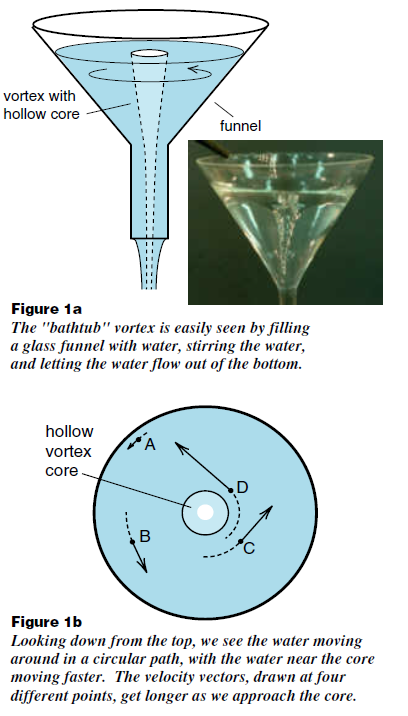


 الفيزياء الكلاسيكية
الفيزياء الكلاسيكية
 الكهربائية والمغناطيسية
الكهربائية والمغناطيسية
 علم البصريات
علم البصريات
 الفيزياء الحديثة
الفيزياء الحديثة
 النظرية النسبية
النظرية النسبية
 الفيزياء النووية
الفيزياء النووية
 فيزياء الحالة الصلبة
فيزياء الحالة الصلبة
 الليزر
الليزر
 علم الفلك
علم الفلك
 المجموعة الشمسية
المجموعة الشمسية
 الطاقة البديلة
الطاقة البديلة
 الفيزياء والعلوم الأخرى
الفيزياء والعلوم الأخرى
 مواضيع عامة في الفيزياء
مواضيع عامة في الفيزياء|
Read More
Date: 6-3-2016
Date: 12-12-2016
Date: 22-11-2020
|
THE VELOCITY FIELD
Imagine that you are standing on a bridge over a river looking down at the water flowing underneath you. If it is a shallow stream the flow may be around boulders and logs, and be marked by the motion of fallen leaves and specks of foam. In a deep, wide river, the flow could be quite smooth, marked only by the eddies that trail off from the bridge abutments or the whipping back and forth of small buoys.
Although the motion of the fluid is often hard to see directly, the moving leaves and eddies tell you that the motion is there, and you know that if you stepped into the river, you would be carried along with the water.
Our first step in constructing a theory of fluid motion is to describe the motion. At every point in the fluid, we can think of a small “particle” of fluid moving with a velocity v . We have to be a bit careful here. If we picture too small a “particle of fluid”, we begin to see individual atoms and the random motion between atoms. This is too small. On the other hand, if we think of too big a “particle”, it may have small fluid eddies inside it and we can’t decide which way this little piece of fluid is moving. Here we introduce a not completely justified assumption, namely that there is a scale of distance, a size of our particle of fluid, where atomic motions are too small to be seen and any eddies in the fluid are big enough to carry the entire particle with it. With this idealization, we will say that the velocity v of the fluid at some point is equal to the velocity of the particle of fluid that is located at that point.
We have just introduced a new concept which we will call the “velocity field”. At every point in a fluid we define a vector v which is the velocity vector of the fluid particle at that point. To formalize the notation a bit, consider the point labeled by the coordinates (x, y, z). Then the velocity of the fluid at that point is given by the vector v (x, y, z), where v (x, y, z) changes as we go from one point to another, from one fluid particle to another.
As an example of what we will call a velocity field, consider the bathtub vortex shown in Figure (1a). From the top view the water is going in a nearly circular motion around the vortex core as it spirals down the funnel. We have chosen Points A, B, C and D, and at each of the points drawn a velocity vector to represent the velocity of the fluid particle at that point. The velocity vectors are tangent to the circular path of the fluid and vary in size depending on the speed of the fluid. In a typical vortex the fluid near the core of the vortex moves faster than the fluid out near the edge. This is represented in Figure (1b) by the fact that the vector at Point D, in near the core, is much longer than the one at Point A, out near the edge.




|
|
|
|
التوتر والسرطان.. علماء يحذرون من "صلة خطيرة"
|
|
|
|
|
|
|
مرآة السيارة: مدى دقة عكسها للصورة الصحيحة
|
|
|
|
|
|
|
نحو شراكة وطنية متكاملة.. الأمين العام للعتبة الحسينية يبحث مع وكيل وزارة الخارجية آفاق التعاون المؤسسي
|
|
|